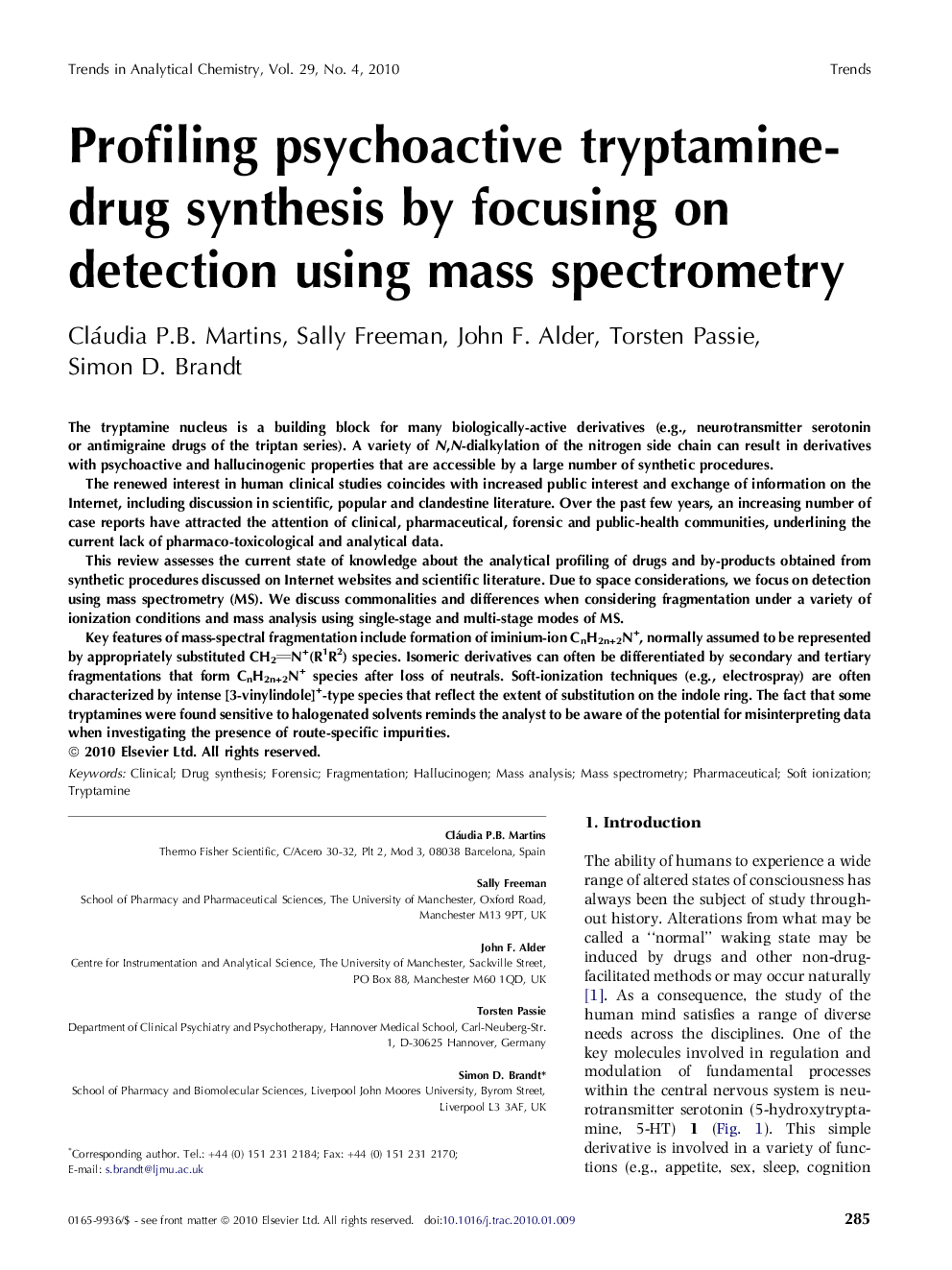| Article ID | Journal | Published Year | Pages | File Type |
|---|---|---|---|---|
| 1248295 | TrAC Trends in Analytical Chemistry | 2010 | 12 Pages |
The tryptamine nucleus is a building block for many biologically-active derivatives (e.g., neurotransmitter serotonin or antimigraine drugs of the triptan series). A variety of N,N-dialkylation of the nitrogen side chain can result in derivatives with psychoactive and hallucinogenic properties that are accessible by a large number of synthetic procedures.The renewed interest in human clinical studies coincides with increased public interest and exchange of information on the Internet, including discussion in scientific, popular and clandestine literature. Over the past few years, an increasing number of case reports have attracted the attention of clinical, pharmaceutical, forensic and public-health communities, underlining the current lack of pharmaco-toxicological and analytical data.This review assesses the current state of knowledge about the analytical profiling of drugs and by-products obtained from synthetic procedures discussed on Internet websites and scientific literature. Due to space considerations, we focus on detection using mass spectrometry (MS). We discuss commonalities and differences when considering fragmentation under a variety of ionization conditions and mass analysis using single-stage and multi-stage modes of MS.Key features of mass-spectral fragmentation include formation of iminium-ion CnH2n+2N+, normally assumed to be represented by appropriately substituted CH2N+(R1R2) species. Isomeric derivatives can often be differentiated by secondary and tertiary fragmentations that form CnH2n+2N+ species after loss of neutrals. Soft-ionization techniques (e.g., electrospray) are often characterized by intense [3-vinylindole]+-type species that reflect the extent of substitution on the indole ring. The fact that some tryptamines were found sensitive to halogenated solvents reminds the analyst to be aware of the potential for misinterpreting data when investigating the presence of route-specific impurities.
